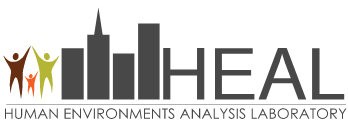
Human Environments Analysis Lab (HEAL)
Document Type
Article
Publication Date
7-2017
Journal
Diabetic Medicine
Volume
34
Issue
7
First Page
958
Last Page
965
URL with Digital Object Identifier
https://doi.org/10.1111/dme.13327
Abstract
Aim To assess whether rates of hospital encounters with hypoglycaemia and hyperglycaemia display seasonal variation.
Methods Time series analyses of the monthly rates of hospital encounters (emergency room visits or inpatient admissions) with hypoglycaemia and hyperglycaemia from 2003 to 2012 using linked healthcare databases in Ontario, Canada.
Results Over the study period, there were 129 887 hypoglycaemia and 79 773 hyperglycaemia encounters. The characteristics of people at the time of their encounters were similar across the seasons in 2008 (median age 68 years for hypoglycaemia encounters and 53 years for hyperglycaemia encounters; 50% female; 90% with diabetes). We observed moderate seasonality in both types of encounters (R2 autoregression coefficient 0.58 for hypoglycaemia; 0.59 for hyperglycaemia). The rate of hypoglycaemia encounters appeared to peak between April and June, when on average, there was an additional 49 encounters per month (0.36 encounters per 100 000 persons per month) compared with the other calendar months (5% increase). The rate of hyperglycaemia encounters appeared to peak in January, when on average, there was an additional 69 encounters per month (0.50 encounters per 100 000 persons per month) compared with the other calendar months (11% increase).
Conclusions In our region, there is seasonal variation in the rate of hospital encounters with hypoglycaemia and hyperglycaemia. Our findings may help to highlight periods of vulnerability for people, may inform future epidemiological studies and may aid in the appropriate planning of healthcare resources.



Notes
Also available open access in Diabetic Medicine [Special Issue on Diabetes Epidemiology] at: https://doi.org/10.1111/dme.13327